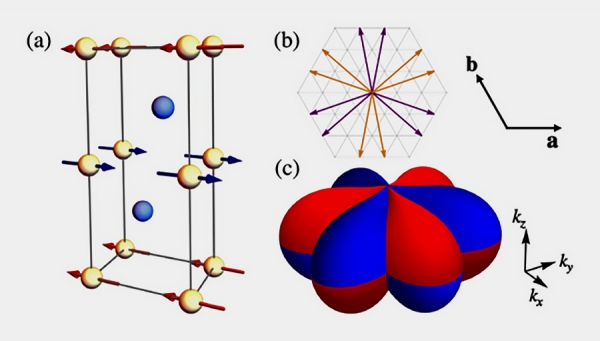
The realm of magnetism is swiftly advancing, revealing new phenomena that challenge our traditional perspectives and create opportunities for technological breakthroughs. Among these latest advancements is the sector of magnonics, which, until examined through Rachel Brazil’s insightful piece, might have stayed unknown to many. Furthermore, the idea of altermagnets has started to intrigue researchers and technologists for its potential influence in the expanding field of magnonics. Here’s why both deserve attention.
Humanity’s comprehension of magnetism dates back thousands of years, with historical documentation indicating early perceptions of magnetic traits in naturally occurring minerals such as lodestone (magnetite). In these ferromagnetic substances, the inherent magnetic dipole moments align in a parallel manner, generating a net magnetic field that appears as a significant macroscopic magnetization. This characteristic has rendered ferromagnets essential in a variety of applications, ranging from data storage methods to everyday objects like refrigerator magnets.
Conversely, antiferromagnetism showcases a distinctive scenario where adjacent magnetic dipole moments align in opposite directions, leading to their mutual cancellation and a net magnetization that nears zero. Recognized since the 1930s, antiferromagnets exhibit behavior similar to nonmagnetic materials in numerous ways, yet they maintain an intrinsic magnetic order. Their absence of stray fields and resistance to magnetic disturbances provide promising benefits for spintronic devices. Despite these advantages, the reduced presence of strong spin-dependent effects has historically constrained their practical usefulness.
Introducing altermagnetism, which combines traits found in both ferromagnets and antiferromagnets. Unlike its forerunners, altermagnetism arises as a unique magnetic order where magnetic dipole moments are oriented antiparallel, while the atomic frameworks supporting each spin undergo a relative rotation. This results in no net magnetism similar to antiferromagnets but demonstrates strong spin-dependent reactions akin to those in ferromagnets when subjected to suitably aligned external electric and magnetic fields.
The initial theoretical accounts of this novel magnetic order emerged between 2019 and 2021. By 2022, it was officially named altermagnetism; however, it was not until early last year that theoretical predictions were experimentally confirmed through studies on manganese telluride. A significant breakthrough occurred later that year with the successful visualization of altermagnetic order, thanks to advanced x-ray spectroscopy and photoemission electron microscopy techniques.1
Although still in its early stages, the area of altermagnetism is witnessing a rise in academic activity, with numerous publications emphasizing its substantial research impact. To date, over 50 compounds are estimated to display altermagnetic properties, highlighting the field’s vibrant nature. Magnonic and spintronic devices emerge as the most immediate application targets for altermagnetism, and some researchers theorize that this emerging understanding could even aid advancements in superconductivity.
Magnetism remains a fundamental aspect of condensed-matter physics, impacting both core research and practical technology. As the increasing interest in altermagnetism shows, our understanding of magnetic phenomena is detailed yet incomplete, leaving vast areas to be explored and comprehended.